Sunburn Risk Calculator
Enter Your Details
Quick Take
- Sunburn is an acute skin injury caused by excess UV radiation.
- It kicks off a cascade of inflammatory signals that can last days.
- Key players include cytokines, skin immune cells, and oxidative stress.
- Antioxidant‑rich foods and proper sunscreen can blunt the response.
- Seek medical care if blisters cover large areas or you develop fever.
When you get sunburn is a skin injury caused by excessive ultraviolet (UV) radiation, the redness, pain, and peeling you see are just the surface signs of a deeper immune reaction. Understanding that reaction helps you treat the burn faster and avoid long‑term skin problems.
What Is Sunburn?
Sunburn occurs when UV photons damage the DNA in skin cells, especially the keratinocytes in the epidermis. The damage triggers repair mechanisms, but if the UV dose exceeds the skin’s capacity, cells release distress signals that attract immune cells. This response is what we label as inflammation.
Inflammation Explained
Inflammation is a protective biological response to harmful stimuli such as pathogens, damaged cells, or irritants. It aims to isolate the threat, clear damaged tissue, and initiate healing. In sunburn, the stimulus is UV‑induced DNA damage, and the inflammation is primarily acute, lasting 2‑5 days.
UV Radiation: The Trigger
UV radiation refers to electromagnetic waves between 100‑400nm that reach Earth’s surface, divided into UVA (320‑400nm) and UVB (280‑320nm). UVB carries most of the sunburn‑inducing energy, while UVA penetrates deeper and contributes to photo‑aging. Both types generate reactive oxygen species (ROS) that damage cellular components.
Cellular Response: Cytokines and Immune Cells
Damaged keratinocytes release cytokines such as interleukin‑1 (IL‑1), interleukin‑6 (IL‑6), and tumor‑necrosis factor‑alpha (TNF‑α). These molecules act like alarm bells, recruiting neutrophils and macrophages to the site.
Neutrophils arrive within hours, releasing enzymes that break down damaged proteins. Macrophages appear later, engulfing cellular debris and secreting growth factors that start the repair phase. The combined activity creates the classic redness (erythema) and swelling you feel.
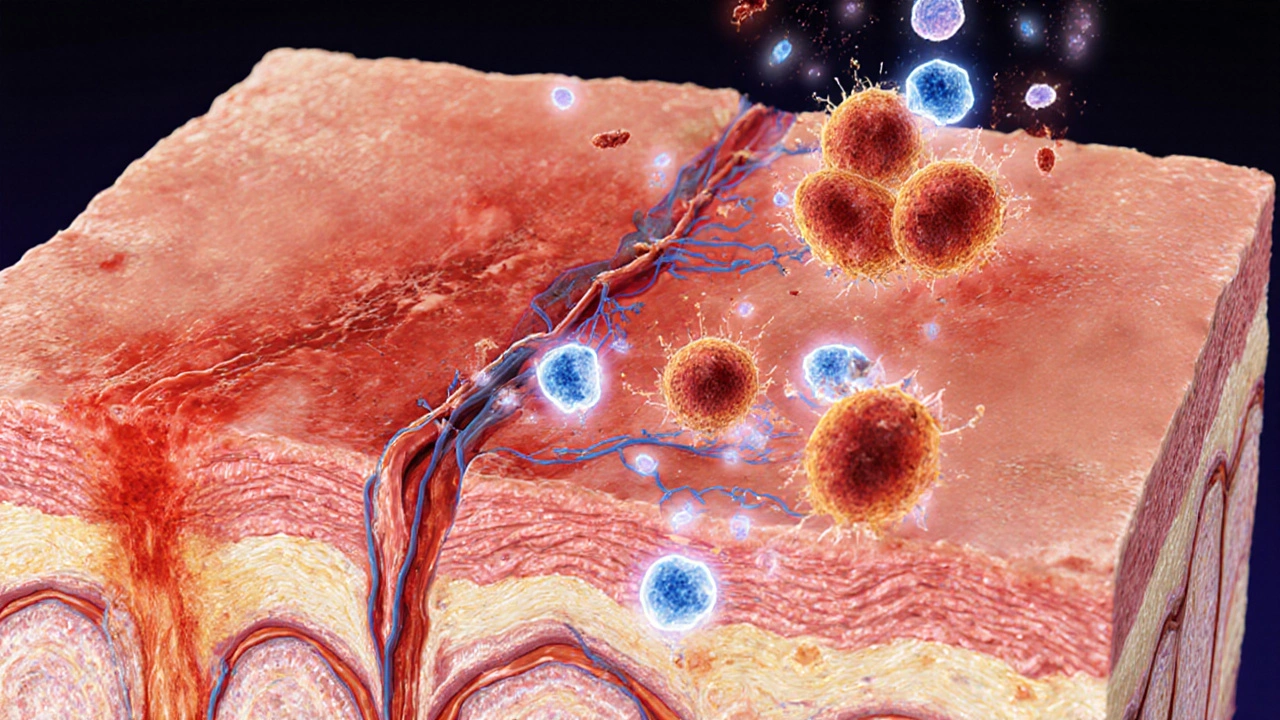
Oxidative Stress and Antioxidants
UV exposure floods the skin with ROS-highly reactive molecules that oxidize lipids, proteins, and DNA. The body counters this with antioxidants like vitaminC, vitaminE, and glutathione. When ROS production outpaces antioxidant defenses, oxidative stress amplifies inflammation, prolonging pain and delaying healing.
Protection Strategies: Sunscreen, Clothing, and Diet
Sunscreen is a topical formulation containing UV filters that absorb, reflect, or scatter ultraviolet photons. Choose broad‑spectrum products with SPF30 or higher, reapply every two hours, and don’t forget ears, neck, and the back of hands.
Clothing offers a physical barrier. UPF‑rated shirts, wide‑brim hats, and sunglasses reduce UV exposure dramatically.
Nutrition also plays a role. Foods rich in lycopene (tomatoes), beta‑carotene (carrots), and flavonoids (berries) boost the skin’s antioxidant capacity. A daily intake of 500mg of vitaminC and 15mg of vitaminE has been shown to lower post‑sunburn inflammation markers.
Practical Tips to Calm Inflammation After Sunburn
- Cool the skin: Apply a cool (not ice‑cold) compress for 15minutes, three times a day.
- Hydrate: Drink at least 2L of water to support cellular repair.
- Moisturize: Use aloe‑vera gel or a fragrance‑free moisturizer containing ceramides.
- Take anti‑inflammatory medication: Ibuprofen 400mg every 6‑8hours can reduce pain and cytokine production.
- Boost antioxidants: Eat a fruit‑rich snack or consider a short‑term supplement of vitaminC and E.
When to Seek Medical Help
If you notice any of the following, call a healthcare professional:
- Blisters covering more than 10% of your body surface.
- Fever, chills, or severe headache.
- Rapidly spreading redness or swelling.
- Signs of infection: pus, increasing pain, or red streaks.
Comparison of Acute vs. Chronic Inflammatory Markers After Sun Exposure
| Marker | Acute (0‑48h) | Chronic (7‑30d) |
|---|---|---|
| IL‑1β | ↑ 3‑fold | → Baseline |
| IL‑6 | ↑ 5‑fold | ↓ 1.5‑fold (still above baseline) |
| TNF‑α | ↑ 2‑fold | → Baseline |
| ROS (measured as MDA) | ↑ 4‑fold | ↓ 2‑fold (but remains elevated) |
| Antioxidant enzymes (SOD, GPx) | ↓ 30% | → Recovery |
Key Takeaway
The redness you see after a day at the beach is more than a cosmetic issue; it’s your body’s inflammatory response to UV‑induced damage. By protecting yourself, supporting antioxidant defenses, and treating the burn promptly, you can shorten the inflammation phase and keep your skin healthier in the long run.
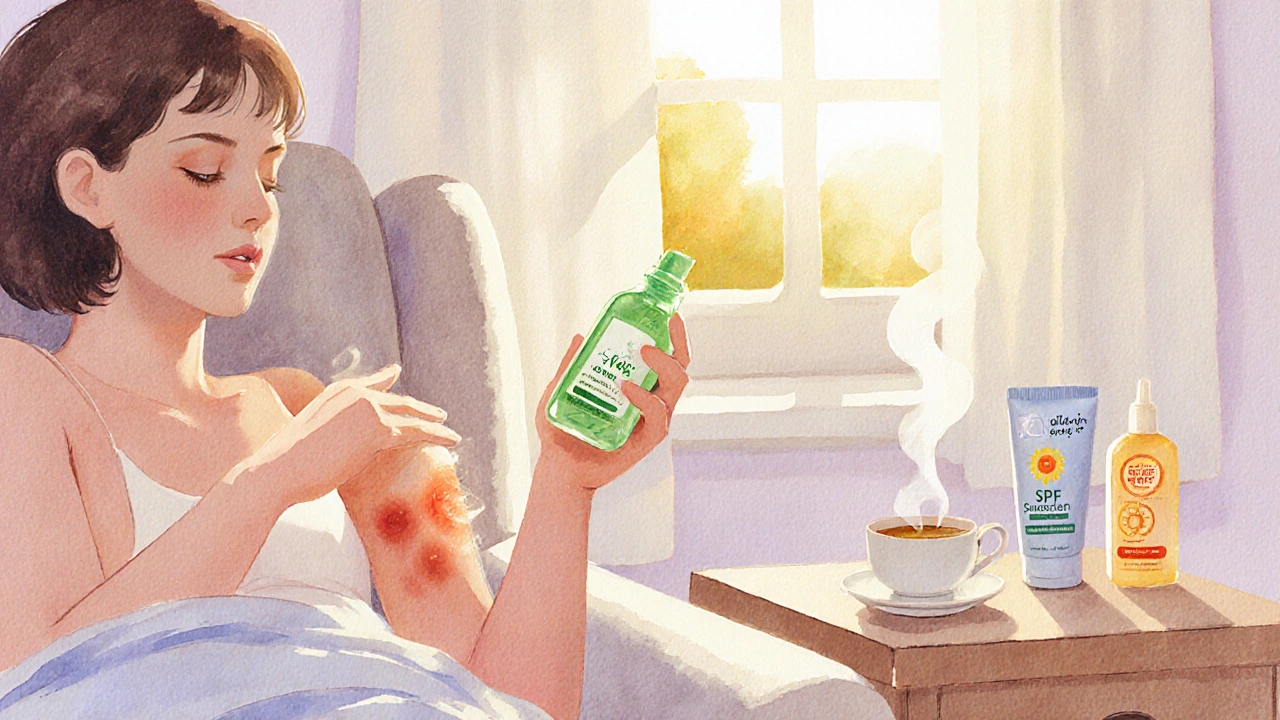
Frequently Asked Questions
Can I use a regular moisturizer on sunburned skin?
Yes, but choose a fragrance‑free, hypoallergenic product. Look for ingredients like aloe‑vera, glycerin, or ceramides that help restore the skin barrier without irritating the inflamed tissue.
Is it safe to take ibuprofen while sunburned?
Ibuprofen reduces pain and suppresses cytokine production, making it a common choice for mild to moderate sunburn. Avoid it if you have kidney issues or are on blood thinners; consult your doctor first.
Do antioxidants really help after sunburn?
Clinical studies show that oral vitaminC (500mg) and vitaminE (15mg) taken within 24hours of exposure lower IL‑6 levels by up to 30%. Topical antioxidants, such as green‑tea extract, also speed up barrier repair.
How long does the inflammation from sunburn usually last?
Acute inflammation peaks at 24‑48hours and typically resolves within 3‑5 days if the skin is cared for properly. Persistent redness beyond a week may indicate deeper damage or an infection.
Can repeated sunburns lead to chronic skin inflammation?
Repeated UV injury can cause a state of low‑grade chronic inflammation, contributing to photo‑aging, loss of elasticity, and increased skin cancer risk. Consistent sunscreen use and antioxidant support are essential to break this cycle.

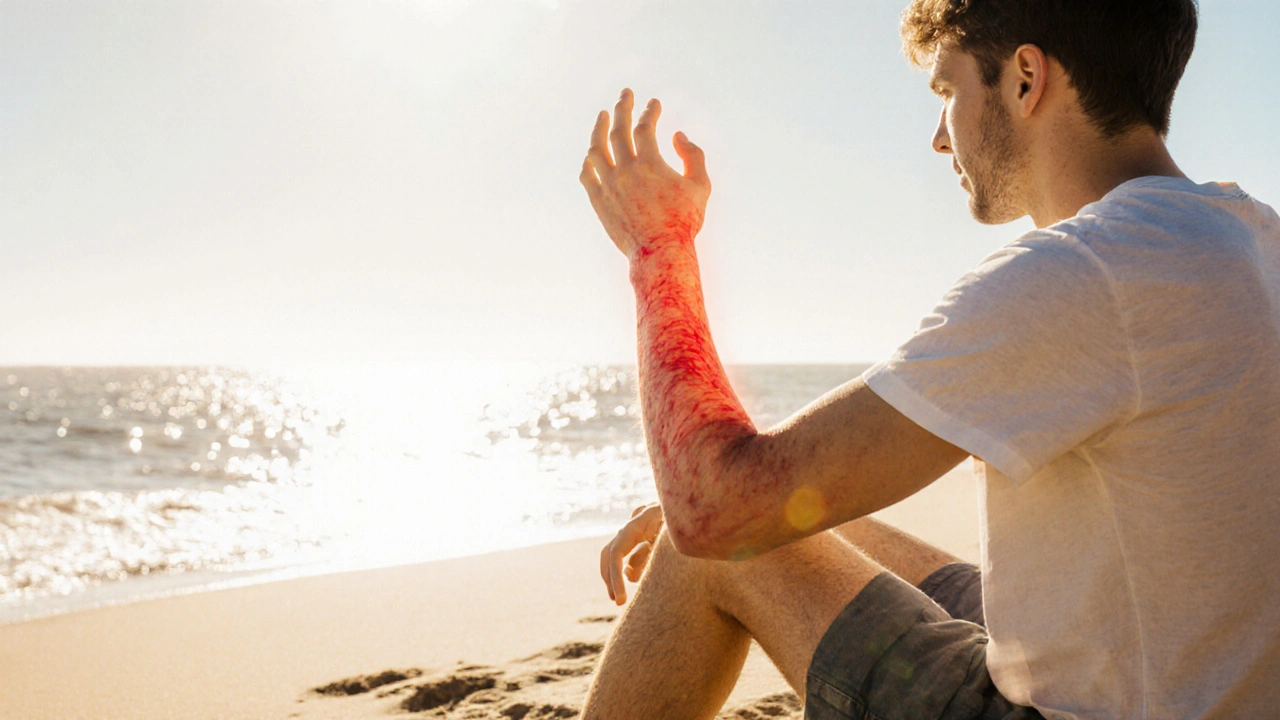
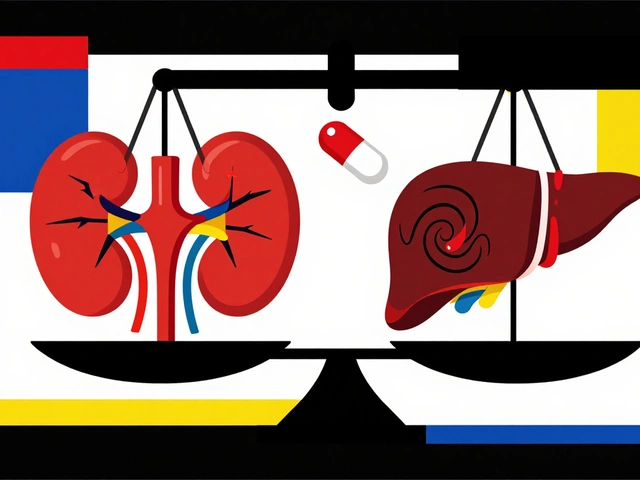
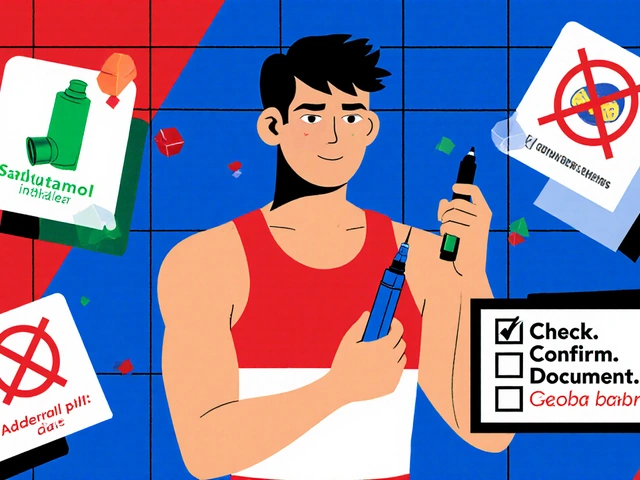

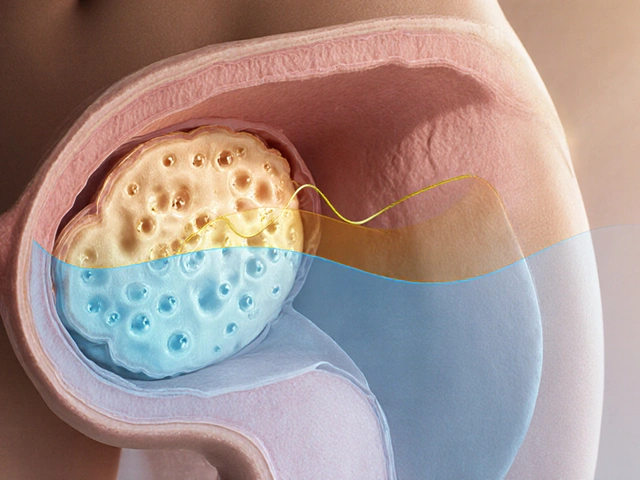
Marsha Saminathan
September 30, 2025 AT 14:18Sunburn isn't just a bad tan, it's the skin's alarm system kicking into high gear. Let me tell you why that matters for every beach day and every backyard barbecue. We all love that feeling of warm sunshine on our skin, but the moment UV rays hit those delicate cells a cascade of signals begins. First the DNA in keratinocytes gets scrambled and the cells scream for help, releasing cytokines like IL‑1 and IL‑6. Then the blood vessels dilate, turning your skin a glorious shade of red that says look at me I'm burning! While you're busy feeling the sting, neutrophils roll in like tiny first‑responders delivering enzymes to clean up the mess. Macrophages follow later to mop up debris and lay down the groundwork for healing. All the while reactive oxygen species are doing their chaotic dance, causing oxidative stress that makes the pain linger. Antioxidants from your diet such as vitamin C and E rush in to calm the storm, but if you skip sunscreen or stay too long you'll overload the system and the inflammation can stretch beyond five days. You might notice peeling as the skin sheds the damaged layers like a snake shedding its skin, and that's your body's way of getting rid of cells that have been beyond repair. The good news is that a cool compress, plenty of water, and a good aloe‑based moisturizer can soothe the nerves and speed up recovery. Meanwhile a broad‑spectrum SPF 30+ shield stops the fire before it even starts. Remember to reapply every two hours especially after swimming or sweating. If you ever see blisters covering a large area or develop a fever, that's a sign to call a professional because infection could be setting in. In the end sunburn is a reminder that our skin is a living organ that talks to us through inflammation, so listen to it, protect it, and give it the care it deserves.
Alice Settineri
September 30, 2025 AT 14:21Honestly you shouldn't be out in that blazing sun without a hat, it's like flirting with a fire hazard.
nathaniel stewart
September 30, 2025 AT 14:25Dear reader, it is highly recommneded to employ broad‑spectrum sunscreen of at least SPF thirty in order to mitigate ultraviolet harm; an occasional lapse in application may result in pronounced erythema and subsequent discomfort. Please consider the aforementioned guidnace with utmost seriousness.
Alex Jhonson
September 30, 2025 AT 14:30Thanks for the solid advice, I totally agree-everybody should slather on some sunscreen like it’s butter on toast, and if you forget just remember the skin will thank you later, even if we sometimes miss a spot here and there, the key is to keep it consistent and stay hydrated.
Katheryn Cochrane
September 30, 2025 AT 14:35The whole sunscreen hype is just a corporate cash grab, they sell you lotions that barely block any UV and then charge premium prices for “organic” variants, meanwhile the so‑called antioxidants are barely enough to counteract the massive oxidative stress we endure, and let’s be honest, most people don’t even follow the re‑application schedule, rendering the whole system ineffective.
Michael Coakley
September 30, 2025 AT 14:41Ah yes, because clearly the universe conspired to make us all burn in perfect harmony, and the only reasonable solution is to abandon protection entirely and let our DNA melt into oblivion, what a profound existential statement.
ADETUNJI ADEPOJU
September 30, 2025 AT 14:48From an ethical standpoint grounded in public health epistemology, the dissemination of UV protection protocols constitutes a non‑negotiable duty; non‑compliance represents a deviation from the normative standards of communal well‑being and may be construed as a negligent act against societal health metrics.
Jim McDermott
September 30, 2025 AT 14:56I appreciate the perspective and it’s clear that promoting sunscreen is part of responsible stewardship of our community’s skin health, and I’ve seen many folks actually adopt better habits after simple education.
Naomi Ho
September 30, 2025 AT 15:05For practical relief, apply a cool compress for fifteen minutes several times a day, stay well hydrated, and use an aloe‑vera gel that contains ceramides to restore the barrier, this routine generally eases pain and accelerates healing.
Evelyn XCII
September 30, 2025 AT 15:15Sure, because slapping on aloe after a fiery sun session is exactly the revolutionary breakthrough we’ve all been waiting for, right?
Nina Vera
September 30, 2025 AT 15:25OMG I literally felt like I was melting into a human tomato at the beach yesterday, the pain was *epic* and I swear my skin was staging a revolt against the sun gods!
Christopher Stanford
September 30, 2025 AT 15:36The melodramatic description is amusing but it distracts from the factual need to apply SPF and avoid prolonged exposure, emotional narratives won’t replace proper skin care protocols.
Jillian Bell
September 30, 2025 AT 15:48What they don’t tell you is that the sunscreen industry is a front for a secret agenda to embed micro‑nanoparticles in our skin, controlling us from the inside while the government turns a blind eye.
Daniel Buchanan
September 30, 2025 AT 16:01While it’s important to stay critical of any industry, let’s focus on evidence‑based practices and support each other in making informed decisions about sun safety without jumping to extreme conclusions.
Lena Williams
September 30, 2025 AT 16:15I get the vibe that we’re all just trying to navigate the sunny side of life while keeping our skin intact, so whether you trust the mainstream advice or question the motives behind it, the essential thing is to stay hydrated, use a good sunscreen, and enjoy the outdoors responsibly.